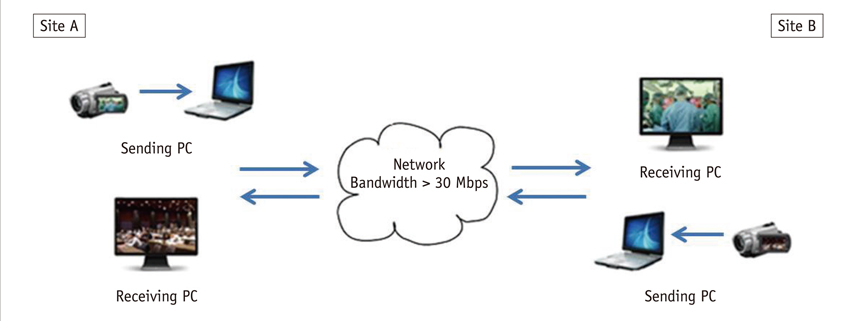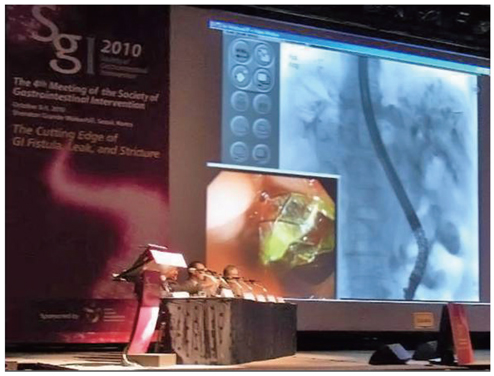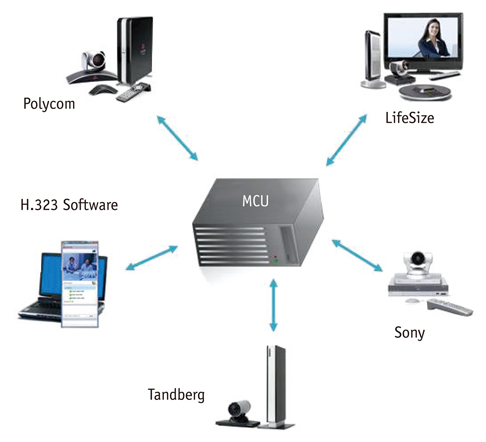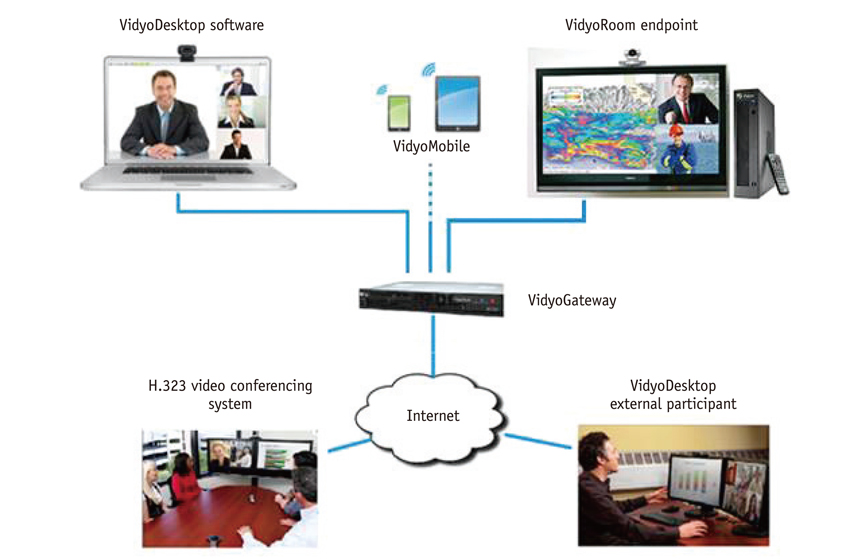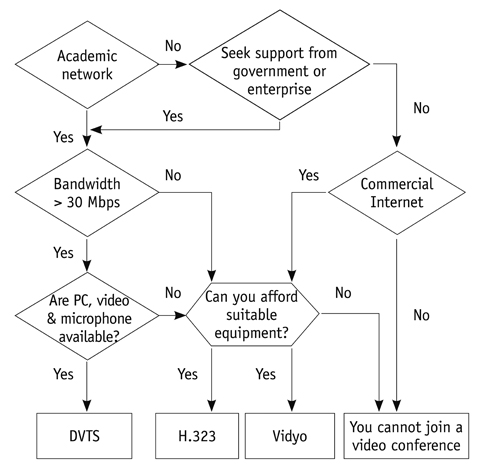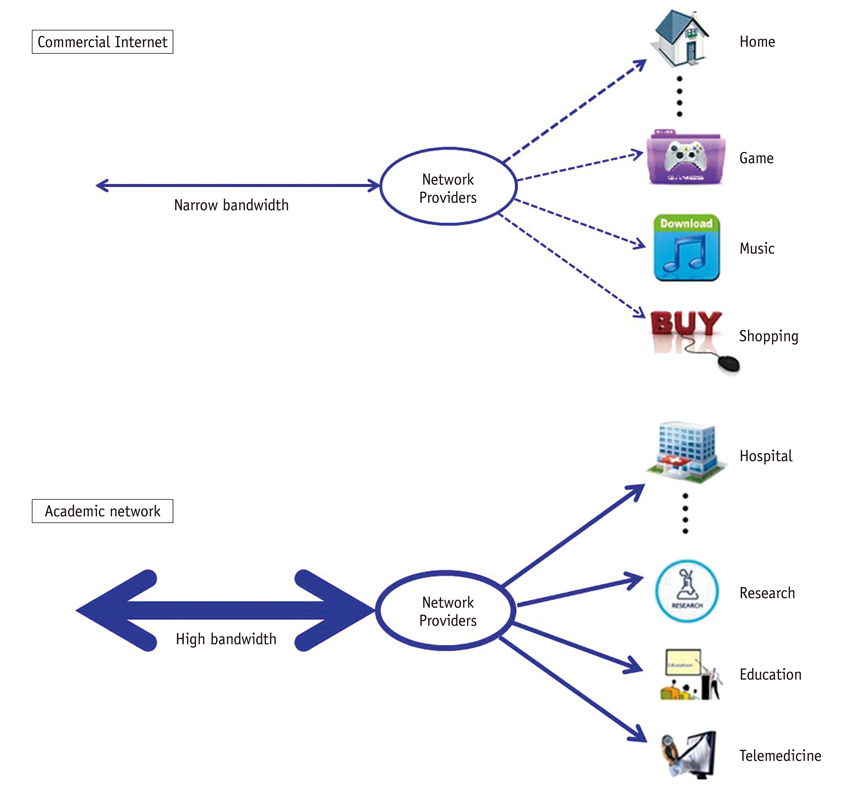Korean J Radiol.
2012 Feb;13(Suppl 1):S21-S30. 10.3348/kjr.2012.13.S1.S21.
Emerging Technologies for Telemedicine
- Affiliations
-
- 1Vietnam Research and Education Network, National Agency for Science and Technology Information, Hanoi 10000, Vietnam.
- 2Department of Endoscopic Diagnostics and Therapeutics, Kyushu University Hospital, Fukuoka 812-8582, Japan. shimizu@med.kyushu-u.ac.jp
- 3Department of Medical Informatics, Kyushu University Hospital, Fukuoka 812-8582, Japan.
- 4Department of Surgery I, Kyushu University Hospital, Fukuoka 812-8582, Japan.
- 5Telemedicine Development Center of Asia, Kyushu University Hospital, Fukuoka 812-8582, Japan.
- 6Research Institute for Information Technology, Kyushu University, Fukuoka 812-8581, Japan.
- 7Department of Surgery and Oncology, Graduate School of Medical Sciences, Kyushu University, Fukuoka 812-8582, Japan.
- KMID: 1372864
- DOI: http://doi.org/10.3348/kjr.2012.13.S1.S21
Abstract
- This paper focuses on new technologies that are practically useful for telemedicine. Three representative systems are introduced: a Digital Video Transport System (DVTS), an H.323 compatible videoconferencing system, and Vidyo. Based on some of our experiences, we highlight the advantages and disadvantages of each technology, and point out technologies that are especially targeted at doctors and technicians, so that those interested in using similar technologies can make appropriate choices and achieve their own goals depending on their specific conditions.
Keyword
MeSH Terms
Figure
Reference
-
1. What Is Telemedicine & Telehealth? American Telemedicine Association. 2010. http://www.americantelemed.org/files/public/abouttelemedicine/What_Is_Telemedicine.pdf.2. Shimizu S, Nakashima N, Okamura K, Hahm JS, Kim YW, Moon BI, et al. International transmission of uncompressed endoscopic surgery images via superfast broadband Internet connections. Surg Endosc. 2006. 20:167–170.3. Hasegawa T, Murase S. Distribution of telemedicine in Japan. Telemed J E Health. 2007. 13:695–702.4. Wong WS, Roubal I, Jackson DB, Paik WN, Wong VK. Outsourced teleradiology imaging services: an analysis of discordant interpretation in 124,870 cases. J Am Coll Radiol. 2005. 2:478–484.5. Mairinger T. Acceptance of telepathology in daily practice. Anal Cell Pathol. 2000. 21:135–140.6. Camara JG, Rodriguez RE. Real-time telementoring in ophthalmology. Telemed J. 1998. 4:375–377.7. Shimizu S, Han HS, Okamura K, Nakashima N, Kitamura Y, Tanaka M. Technologic developments in telemedicine: state-of-the-art academic interactions. Surgery. 2010. 147:597–601.8. Ogawa A, Kobayashi K, Sugiura K, Nakamura O, Murai J. Design and implementation of DV stream over Internet. Internet Workshop. 1999. 255–260.9. Fisher B. Fisher B, editor. How DV works: inside the technology. The videomaker guide to video production. 2008. 3rd ed. Boston: Focal Press;11–14.10. An explanation of video compression techniques. AXIS communications. http://www.axis.com/files/whitepaper/wp_videocompression_33085_en_0809_lo.pdf.11. Hunter DK. Hunter DK, editor. The Internet and TCP/IP. The cable and telecommunications professionals' reference. 2007. 4th ed. Boston: Focal Press;121–169.12. Operating systems. http://en.wikipedia.org/wiki/Operating_system.13. Bloks RHJ. The IEEE-1394 high speed serial bus. Philips J Res. 1996. 50:209–216.14. Shimizu S, Okamura K, Nakashima N, Kitamura Y, Torata N, Tanaka M. Martinez L, Gomez C, editors. Telemedicine with digital video transport system over a worldwide academic network. Telemedicine in the 21st century. 2008. New York: Nova Science Publishers;143–164.15. Shimizu S, Okamura K, Nakashima N, Kitamura Y, Torata N, Yamashita T, et al. Georgi Graschew G, Roelofs TA, editors. High-quality telemedicine using digital video transport system over global research and education network. Advances in telemedicine: technologies, enabling factors and scenarios. 2011. Croatia: Intech;87–110.16. Recommendation ITU-R BT.470-7, Conventional Analog Television Systems. International Telecommunication Union. http://en.wikipedia.org/wiki/ITU-R_BT.470-7.17. Pritchard DH, Gibson JJ, Cugnini A. Williams EA, editor. Worldwide Standards for Analog Television. National Association of Broadcasters Engineering Handbook. 2007. 10th ed. Boston: Focal Press;191–204.18. Kyriannis J. Evaluation of digital video transmission via DVTS software over NYU-NET between NYU Washington Square and NYU Medical Center campuses. http://www.nyu.edu/its/pubs/architecture/nyu-dvts-eval-200512.pdf.19. Instructions for DVTS packet. http://www.temdec.med.kyushu-u.ac.jp/eg/html/eizo/DVTSsetupEN/7.pdf.20. Buccafurri F, Meo PD, Fugini M, Furnari R, Goy A, Lax G, et al. Analysis of QoS in cooperative services for real time applications. Data Knowl Eng. 2008. 67:463–484.21. Periakarruppan G, Rashid HA. Packet based echo cancellation for VoIP networks. Comput Electr Eng. 2007. 33:139–148.22. DVTS update. http://www.apan.net/meetings/India2011/Session/Slides/hdtv/1-3.pdf.23. Shimizu S, Nakashima N, Okamura K, Tanaka M. One hundred case studies of Asia-Pacific telemedicine using a digital video transport system over a research and education network. Telemed J E Health. 2009. 15:112–117.24. Civanlar MR, Özkasap Ö, Çelebi T. Peer-to-peer multipoint videoconferencing on the Internet. Signal Process-Image. 2007. 20:743–754.25. Shimizu S, Okamura K, Navatil J. DVTS Video conferencing with Quatre - a reasonable tool for medical multipoint applications. Proceedings CESNET Conference. 2008. 113–121.26. Jack K. Jack K, editor. NTSC and PAL digital encoding and decoding. Video Demystified. 2007. 5th ed. Burlington: Newnes;388–465.27. Rumsey F, McCormick T. Rumsey F, McCormick T, editors. Digital audio formats and interchange. Sound and Recording. 2010. 6th ed. Boston: Focal Press;299–340.28. DVTS-plus manual. http://conf.dvtsplus.org/user_manual.pdf.29. Reid M. Multimedia conferencing over ISDN and IP networks using ITU-T H-series recommendations: architecture, control and coordination. Comput Netw. 1999. 31:225–235.30. Ni Z, Chen Z, Ngan KN. A real-time video transport system for the best-effort Internet. Signal Process-Image. 2005. 20:277–293.31. Guerrero D, Wilson D. Williams EA, editor. Digital Video Signal and Bitstream Analysis. National Association of Broadcasters Engineering Handbook. 2007. 10th ed. Boston: Focal Press;1869–1893.32. Demartines N, Mutter D, Vix M, Leroy J, Glatz D, Rösel F, et al. Assessment of telemedicine in surgical education and patient care. Ann Surg. 2000. 231:282–291.33. High-definition: the evolution of video conferencing. Polycom Inc. www.ivci.com/pdf/whitepaper-hd-video-conferencing.pdf.34. Song H, Kim J, Kuo CJ. Real-time encoding frame rate control for H.263+ video over the Internet. Signal Process-Image Commun. 1999. 15:127–148.35. Wheeler P. Wheeler P, editor. Line Standards and Definition. High Definition Cinematography. 2009. 3rd ed. Boston: Focal Press;75–84.36. Polycom, Inc. http://www.polycom.com/.37. LifeSize Communications Inc. http://www.lifesize.com/.38. Tandberg Inc. http://www.tandberg.com/.39. Sony Electronics Inc. http://pro.sony.com/bbsc/ssr/cat-videoconference/.40. Cisco System Inc. http://www.cisco.com/en/US/products/ps7060/products.html.41. Banerji AK, Panchapakesan K, Swaminathan K. Stitching of H.264 video streams for continuous presence multipoint videoconferencing. J Vis Commun Image R. 2006. 17:490–508.42. Kwon S, Tamhankar A, Rao KR. Overview of H.264/MPEG-4 part 10. J Vis Commun Image R. 2006. 17:186–216.43. Vidyo Inc. http://www.vidyo.com/documents/resources/vidyo_conferencing.pdf.44. Bauerfeld WL, Holleczek P. Global connectivity. Comput Networks. 1989. 17:300–304.45. Hui SC, Foo S. A dynamic IP addressing system for Internet telephony applications. Comput Commun. 1998. 21:254–266.46. Gough M, Rosenfeld J. Gough M, Rosenfeld J, editors. Selecting a High-Speed Internet Provider. Video Conferencing Over IP. 2006. Burlington: Syngress;21–37.47. Asymmetric Digital Subscriber Line (ADSL). Cisco Inc. http://www.cisco.com/en/US/tech/tk175/tk15/tsd_technology_support_protocol_home.html.48. Heatley DJ, Bell GD. Telemedicine in gastrointestinal endoscopy. Endoscopy. 2003. 35:624–626. author reply 627-628.49. Wildi SM, Kim CY, Glenn TF, Mackey HA, Viator GE, Wallace MB, et al. Tele-endoscopy: a way to provide diagnostic quality for remote populations. Gastrointest Endosc. 2004. 59:38–43.50. Rabenstein T, Maiss J, Naegele-Jackson S, Liebl K, Hengstenberg T, Radespiel-Tröger M, et al. Tele-endoscopy: influence of data compression, bandwidth and simulated impairments on the usability of real-time digital video endoscopy transmissions for medical diagnoses. Endoscopy. 2002. 34:703–710.51. Gandsas A, Altrudi R, Pleatman M, Silva Y. Live interactive broadcast of laparoscopic surgery via the Internet. Surg Endosc. 1998. 12:252–255.52. Asia Pacific Advanced Network. http://www.apan.net/home/aboutapan/APAN.php.53. National Research and Education Network. http://en.wikipedia.org/wiki/National_research_and_education_network.54. KOREN: Korea Advanced Research Network. http://www.koren.kr/koren/eng/index.html.55. Internet2. http://www.internet2.edu.56. GEANT2. http://www.geant2.net.57. Shimizu S, Han HS, Okamura K, Yamaguchi K, Tanaka M. Live demonstration of surgery across international borders with uncompressed high-definition quality. HPB (Oxford). 2007. 9:398–339.58. Holub P, Matyska L, Liška M, Hejtmánek L, Jiří D, Rebok T, et al. High-definition multimedia for multiparty low-latency interactive communication. Future Gener Comp Sy. 2006. 22:856–861.59. Brower E, Jeffress L, Pezeshki J, Jasani R, Ertekin E. Integrating Header Compression with IPsec. Military Communications Conference. 2006. 23–25.60. Guideline for safety management of medical information system: 4.1st edition. Ministry of Health, Labour and Welfare. 2010. http://www.mhlw.go.jp/shingi/2010/02/dl/s0202-4a.pdf (in Japanese).
- Full Text Links
- Actions
-
Cited
- CITED
-
- Close
- Share
- Similar articles
-
- Telemedicine in the U.S.A. with Focus on Clinical Applications and Issues
- Emerging New Era of Mobile Health Technologies
- Evolving Software Architecture Design in Telemedicine: A PRISMA-based Systematic Review
- Survey study of telemedicine-experienced physicians on the acceptability of telemedicine: using propensity score matching method
- A Telemedicine System Using B-ISDN

